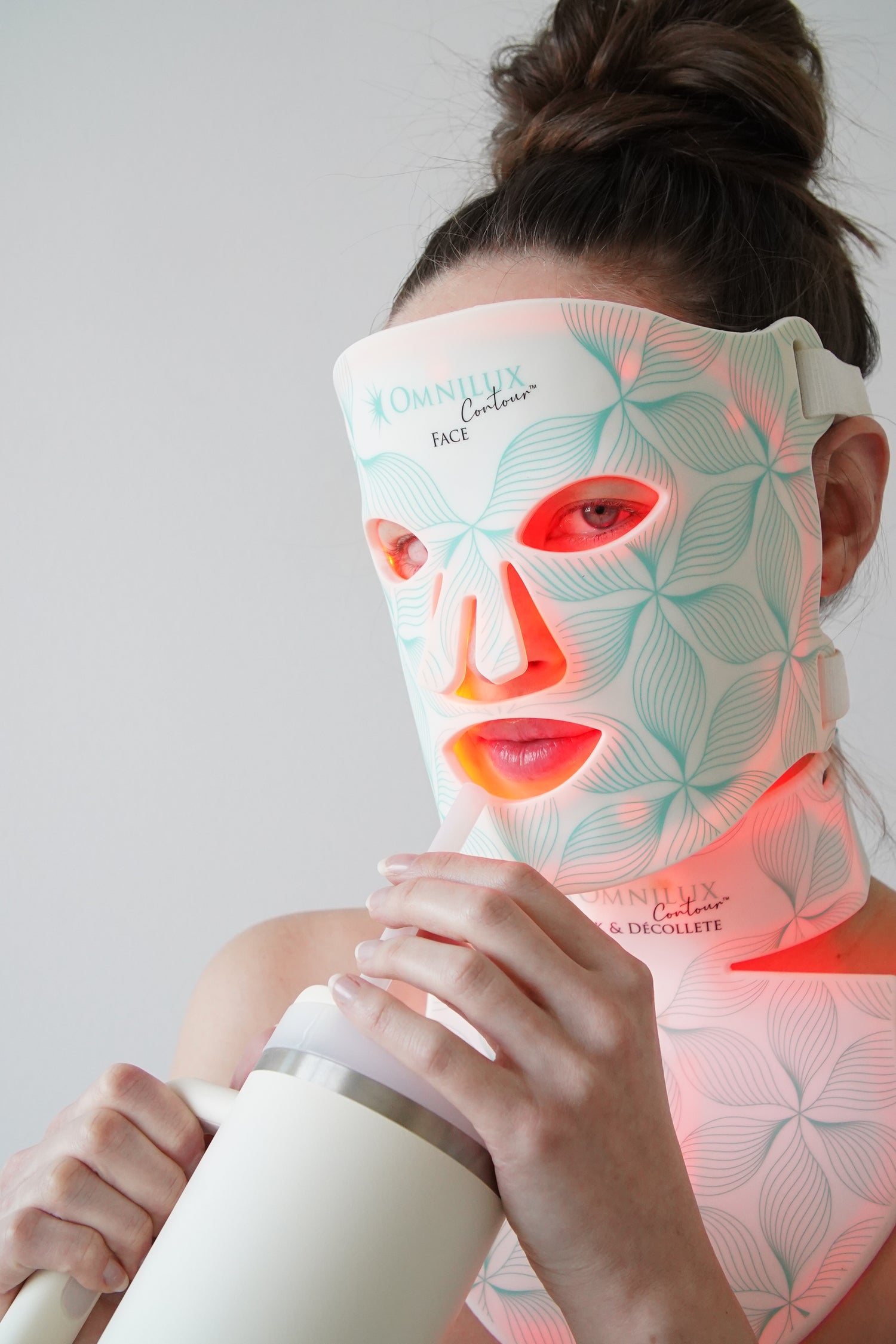Oil-based cleansers have become increasingly popular for their ability to effectively remove makeup, dirt, and impurities without stripping the skin of its natural moisture.
In this blog post, we'll discuss the science behind oil-based cleansers, the benefits of using them in a double cleansing routine, and provide a step-by-step double-cleansing guide on how to cleanse off makeup and SPF using ISDIN Essential Oil Cleanser.
Get ready to unlock the secret to clearer, glowing, healthy skin!
The Science Behind Oil-Based Cleansers
Oil-based cleansers work on the principle of "like dissolves like." They contain oil-soluble ingredients that effectively break down and dissolve makeup, sebum, and sunscreen, making them essential to a double-cleansing routine. Studies have shown that oil-based cleansers can help prevent acne breakouts, reduce inflammation, and improve skin hydration.
ISDIN Essential Oil Cleanser: Ingredients and Benefits
ISDIN Essential Oil Cleanser is a blend of natural oils, including sunflower seed oil, sweet almond oil, and grape seed oil. These oils help dissolve makeup and impurities and are packed with vitamins and antioxidants that nourish and protect the skin. Let's take a closer look at these key ingredients:
Sunflower Seed Oil is rich in linoleic acid, an essential fatty acid that helps maintain the skin's barrier function and reduce transepidermal water loss. It also contains vitamin E, a powerful antioxidant that protects the skin from free radical damage.
Sweet Almond Oil is an excellent emollient that helps to soften and moisturize the skin. It is also rich in vitamins A and E, which provide antioxidant protection and support the skin's natural regeneration process.
Grape Seed Oil is high in polyphenols, which are potent antioxidants that help to protect the skin from oxidative stress and premature aging. It also has anti-inflammatory properties that can help soothe irritated skin.
Step-by-Step Guide to Cleansing Off Makeup and SPF with Oil Cleansers
1. Dispense Cleanser
Squeeze a small amount of ISDIN Essential Oil Cleanser onto your dry hands.
2. Massage onto Dry Skin
Gently massage the cleanser onto your dry face in circular motions, focusing on areas with makeup and sunscreen, for about 1 minute. This will help to dissolve and break down impurities.
3. Emulsify with Water
Wet your hands and continue massaging your face, working the oil cleanser into a milky emulsion. This process helps lift dirt and impurities from the skin more effectively.
4. Rinse Thoroughly
Rinse your face with lukewarm water to remove the cleanser completely. It is crucial to ensure that all residue is washed away to prevent any buildup on the skin.
5. Pat Dry
Gently pat your face dry with a clean towel, avoiding any rubbing or tugging on the skin.
6. Follow with a Water-Based Cleanser (Optional)
For a double cleansing routine, follow up with a water-based cleanser, like Revision’s Papaya Enzyme Cleanser, to remove any remaining residue and deeply cleanse the skin.
7. Complete Your Skincare Routine
After cleansing, apply your favorite toner, serum, and moisturizer to keep your skin nourished and hydrated. Remember to use a broad-spectrum SPF during the day to protect your skin from the sun's harmful UV rays.
Final Thoughts on Oil-Based Cleansers
Incorporating an oil-based cleanser like ISDIN Essential Oil Cleanser can lead to clearer, glowing, and healthier skin. The natural oils and antioxidants in these cleansers help remove makeup and impurities and provide numerous skin benefits. By following our step-by-step guide to cleansing an oil-based cleanser, you'll be well on your way to achieving the radiant, healthy skin you've always wanted.
Resources
Ahmad, Zeeshan. “The Uses and Properties of Almond Oil.” Complementary Therapies in Clinical Practice, vol. 16, no. 1, 2010, pp. 10–12, https://doi.org/10.1016/j.ctcp.2009.06.015.
Burlando, Bruno, and Laura Cornara. “Honey in Dermatology and Skin Care: A Review.” Journal of Cosmetic Dermatology, vol. 12, no. 4, 2013, pp. 306–313, https://doi.org/10.1111/jocd.12058.
Cicerale, Sara, et al. “Biological Activities of Phenolic Compounds Present in Virgin Olive Oil.” International Journal of Molecular Sciences, vol. 11, no. 2, 2010, pp. 458–479, https://doi.org/10.3390/ijms11020458.
Danby, Simon G., et al. “Effect of Olive and Sunflower Seed Oil on the Adult Skin Barrier: Implications for Neonatal Skin Care.” Pediatric Dermatology, vol. 30, no. 1, 2012, pp. 42–50, https://doi.org/10.1111/j.1525-1470.2012.01865.x.
Draelos, Zoe D. “The Effect of a Daily Facial Cleanser for Normal to Oily Skin on the Skin Barrier of Subjects with Acne.” Cutis, vol. 78, July 2006, pp. 34–40.
Lin, Tzu-Kai, et al. “Anti-Inflammatory and Skin Barrier Repair Effects of Topical Application of Some Plant Oils.” International Journal of Molecular Sciences, vol. 19, no. 1, 2017, p. 70, https://doi.org/10.3390/ijms19010070.
Packer, Lester, and Giuseppe Valacchi. “Antioxidants and the Response of Skin to Oxidative Stress: Vitamin E as a Key Indicator.” Skin Pharmacology and Physiology, vol. 15, no. 5, 2002, pp. 282–290, https://doi.org/10.1159/000064531.
Satchell, Andrew C., et al. “Treatment of Dandruff with 5% Tea Tree Oil Shampoo.” Journal of the American Academy of Dermatology, vol. 47, no. 6, 2002, pp. 852–855, https://doi.org/10.1067/mjd.2002.122734.
Shi, John, et al. “Polyphenolics in Grape Seeds—Biochemistry and Functionality.” Journal of Medicinal Food, vol. 6, no. 4, 2003, pp. 291–299, https://doi.org/10.1089/109662003772519831.






